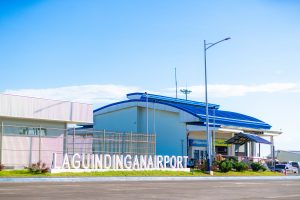
Aboitiz InfraCapital, Inc. (AIC), the infrastructure arm of the Aboitiz Group, is coordinating the phased handover of facilities, buildings, and land at Laguindingan International Airport, aligning with its long-term vision for the airport’s growth and modernization ahead of its official takeover in April 2025.
This initiative aligns with AIC’s long-term vision to enhance and modernize Laguindingan International Airport (the country’s sixth-busiest airport and Mindanao’s second-busiest after Davao City’s Francisco Bangoy International Airport), reinforcing its role as a vital gateway for Mindanao’s socio-economic and tourism growth and uplifting the lives of local residents in the process.
“We are committed to delivering an efficient and well-managed transition process that paves the way for the modernization of Laguindingan International Airport. Our goal is to enhance the gateway’s infrastructure and services to meet the growing demands of travelers and businesses,” said AIC President and Chief Executive Officer Cosette V. Canilao.
“Our vision for Laguindingan International Airport is to create a world-class gateway that will drive economic progress and connectivity for Mindanao. This project is a key milestone in our goal of elevating Philippine aviation standards and delivering an exceptional Filipino brand of hospitality and service,” added Rafael M. Aboitiz, AIC Vice President for Airports Business.
Laguindingan International Airport is the first successful airport public-private partnership project awarded via unsolicited bid under the current administration.
Last October 2024, a P12.75 billion concession agreement was signed by AIC, the Department of Transportation, and the Civil Aviation Authority of the Philippines for AIC to undertake the development and modernization of Laguindingan International Airport over a 30-year period after the official turnover in April 2025.
At present, main facilities operating at Laguindingan International Airport (which commenced operations in 2013) include the 7,184-square meter passenger terminal building and 350-square meter cargo terminal.

Other core facilities include the air traffic control building, car parks, aircraft rescue and firefighting building, administration building, maintenance building, and other utilities infrastructure such as the airport’s power supply system, water supply network, sewerage network, and storm water drain network.
The phased handover process from CAAP to AIC is designed to minimize disruptions while ensuring operational continuity. AIC is closely working with local stakeholders to facilitate the transition, implementing strategic planning and coordination measures to support future progress not just for Laguindingan, but also for surrounding areas and Misamis Oriental as a whole.
AIC earlier announced various plans for Laguindingan International Airport, including renovating and expanding the passenger terminal, installing modern equipment, and enhancing airside and landside facilities. These improvements aim to significantly enhance passenger experience, boost operational efficiency, and elevate safety and security standards at the airport.
Expansion plans will be undertaken in two phases, increasing Laguindingan International Airport’s design capacity from the current 1.6 million passengers per annum (mppa) to 3.9 mppa for the first phase and up to 6.3 mppa for the second phase, depending on traffic demand.
AIC is known for operating the award-winning Mactan-Cebu International Airport (MCIA), which has set new benchmarks for airport operations in the Philippines and whose Terminal 2 holds a prestigious 4-star rating from globally renowned aviation consultancy Skytrax.
Aside from the Laguindingan International Airport, AIC will manage the concession to upgrade, operate, and maintain Bohol-Panglao International Airport, the country’s ninth-busiest gateway, with official takeover scheduled for June 2025.
The proposed P4.53 billion project for Bohol-Panglao International Airport also involves expanding the passenger terminal building, installing essential equipment, and modernizing airside and landside facilities within a 30-year concession period.
Laguindingan and Bohol-Panglao International Airports are part of AIC’s broader strategy to develop and manage infrastructure assets that deliver topnotch Filipino hospitality, better and smoother travel, and seamless connectivity across the Philippines.
As a unit of the Aboitiz Group techglomerate, AIC is leveraging its expertise in infrastructure and technology to drive sustainable growth in the country’s aviation sector.
